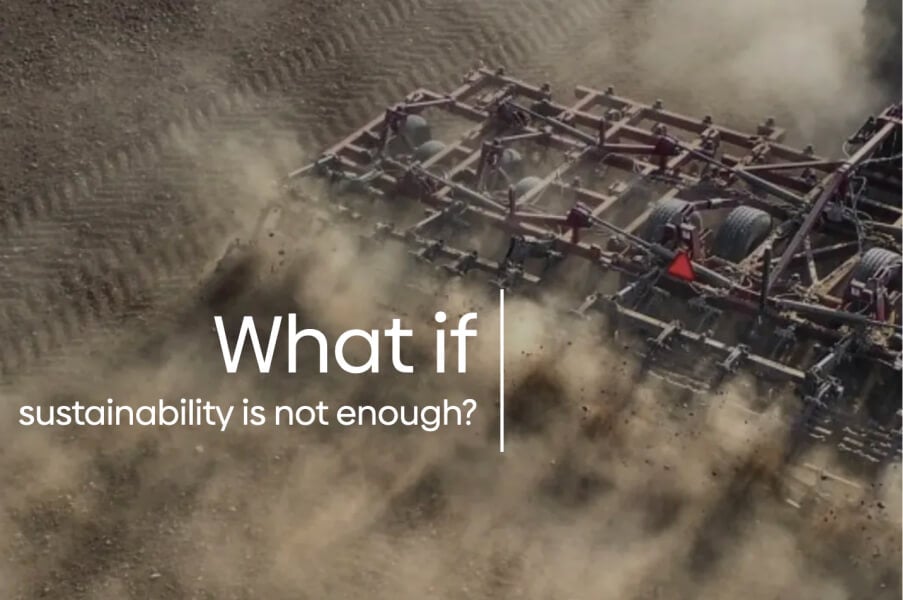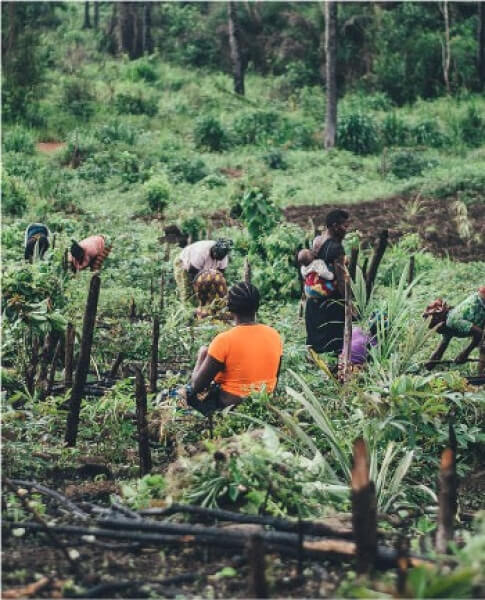
Our food system is broken.
There are more than 400,000 species of plants on Earth. Of the 400,000, at least half are edible to humans. Yet, we only consume a miniscule fraction of it. Nearly 90% of the per capita of plant-based food are from just 100 crop species. In fact, 60% of the world’s food energy intake comes from only three crops— wheat, maize and rice. This oversimplification of our food basket has led to widespread models of monoculture and factory farming— the culprit behind many of the environmental problems we have today. The industry now poses major threats to human health, the environment, and communities. Today, it leaves behind empty lands, manufactures empty calories, and empties the livelihoods of communities.

Leaving behind empty lands
The way we grow food hurts our planet and has been hurting our planet for too long a time. Unfortunately, it seems the majority is choosing to overlook the damage and focuses only on the profits. More than half of the land used for agriculture is either moderately or severely affected by soil degradation and arable lands are depleting 35 times faster than ever recorded. More recently, research has found that almost a million hectares of Amazon rainforest are cleared out every year for agricultural activities like monoculture soybean farming and cattle ranches. The loss rate is only accelerating. Ignorance is bliss until it isn’t.

Manufacturing empty calories
This current agri-food system is not only hurting the planet, it is hurting its people as well. 7 out 10 people suffer from what they eat— either from a lack of nutrients or an excessive amount of empty calories. More specifically, 2.3 billion people globally are obese or overweight. Simultaneously, about 2 billion of us are nutritionally challenged because we neither intake enough micronutrients, nor do some of us have the disposable income to afford a diversified balanced diet. How ridiculous is it to have a global village that starves, and eats themselves into diseases at the same time.

Emptying the livelihoods of communities
Our agri-food industry is motivated by economies of scale and monetary key performance indicators that not only disregard the loss of natural resources, but especially disregard the livelihoods of its farmers. There are 2.6 billion farmers who make a living off of agricultural activities and a staggering 74% of them are amongst the poorest of the poor. All the while, food monopolies are amongst the largest businesses in the world. This disparity is further accelerated by climate change causing further environmental degradation. Less and less lands are arable. Farming becomes more and more unprofitable because more inputs are needed to maintain fertility of the now-degraded land. Higher barriers of entry means further consolidation of Big Food. Communities are drained off their livelihoods with little else to live off. Many are making the precarious crossing of the Mediterranean sea on sketchy boats or making months-long trip across violence ridden terrains with a dream of, not better living environment, but simply a livable environment.
What if sustainability is not enough?
A greener way of doing things won’t be enough. Saving a few percentages of water use per hectare on a farm will not solve all these systemic problems. We need to rethink the entire supply chain that shapes our global agri-food system. We need disruptive ideas that challenge established norms. What if we made noodles with a legume using a technology that would preserve its nutritive properties? What if this same legume could also make a competent milk replacement? What if we build a big part of our business around neglected and forgotten low-footprint crops that can solve the planet’s growing protein needs.
These ‘what if…?” questions drive every single one of us at WhatIF Foods.
What's next?
Read all about the mighty BAMnut and its journey to your kitchen here.
Learn more about the show-stopping nutritional profile of BAMnut here.
Discover how biochar plays an important role in reducing our carbon footprint here.
Find out how we create a Better Better with our partner farming communities here.






